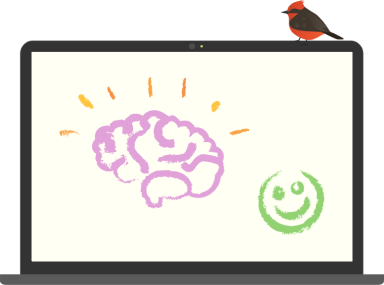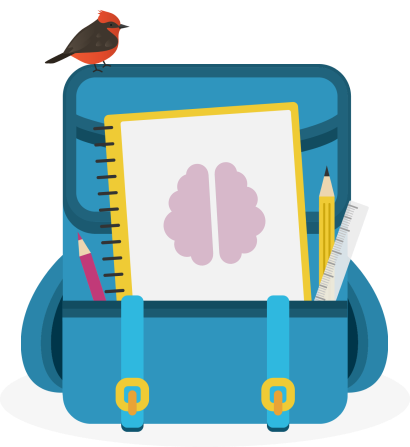
The Mental Health Crisis Among Children and Young People
In 2024, the mental health crisis among children and young people in the United States continues to be a significant concern, with rising rates of depression, anxiety, and tragically, suicide.
According to the Centers for Disease Control and Prevention (CDC), mental health disorders are alarmingly prevalent among children and adolescents. Approximately one in five children aged 3-17 experiences a mental health disorder each year. This translates to millions of children grappling with conditions such as anxiety, depression, ADHD, and behavior disorders.

Mental Health Statistics:
Depression: About 4.4 million children aged 3-17 have been diagnosed with depression.
Anxiety: Approximately 5.8 million children in the same age group suffer from anxiety disorders.
ADHD: Attention-deficit/hyperactivity disorder affects around 6.1 million children.
These numbers reflect only diagnosed cases, indicating that the true prevalence of mental health issues may be even higher.
As we delve into the latest statistics and explore the contributing factors, it becomes clear that urgent and comprehensive action is needed to safeguard the wellbeing of our young population.
The Tragic Reality of Child Suicide
Suicide remains a leading cause of death among young people in the United States. The most recent data highlights a troubling rise in suicide rates among children and adolescents.
2024 Suicide Statistics:General Rates: Suicide is the second leading cause of death for individuals aged 10-19. The suicide rate for children aged 10-14 is approximately 2.5 per 100,000, and for those aged 15-19, it is about 14.5 per 100,000.
Gender Differences: Boys are more likely to die by suicide than girls. In 2024, the suicide rate for boys aged 10-19 is significantly higher than for girls, although girls report higher rates of suicidal ideation and attempts.
Race and Ethnicity: Native American and Alaska Native youth have the highest rates of suicide among racial and ethnic groups, followed by White and Asian American youth. Black and Hispanic youth have lower rates but are experiencing a rising trend.
Trend: : The rate of suicide among school-age children has been increasing over the past decade, with significant rises during and following the COVID-19 pandemic.
LGBTQ+: LGBTQ+ teens are at a significantly higher risk of suicide, with rates estimated to be 3-4 times higher than their heterosexual peers.
Higher Rates in Rural Areas: Rural areas tend to have higher teen suicide rates compared to urban areas due to factors like limited access to mental health care and social isolation.
Contributing Factors to the Crisis
Several factors contribute to the mental health crisis and rising suicide rates among children and adolescents:
Mental Health Disorders:Depression and anxiety: A significant number of children who die by suicide suffer from depression and anxiety. These conditions often go undiagnosed and untreated, exacerbating the risk.
Substance Abuse:
Alcohol and drugs: Substance abuse is a critical risk factor. Adolescents who misuse alcohol and drugs are at a higher risk of suicide due to impaired judgment and increased impulsivity.
Family and Social Environment:
Family dynamics: Family conflict, divorce, abuse, and neglect are significant contributors. Lack of parental support and communication can severely impact a child's mental health.
Bullying: Both traditional bullying and cyberbullying are strongly linked to suicidal thoughts and attempts. Victims of bullying often feel isolated and helpless.
Academic Pressure:
Stress and expectations: High academic expectations and the pressure to succeed can contribute to mental health issues. Failure to meet these expectations can lead to feelings of worthlessness and hopelessness.
Access to Means:
Firearms: Easy access to firearms significantly increases the risk of suicide. Studies show that homes with firearms are at higher risk for suicide incidents.
Medications and other means: Access to medications and other lethal means also contributes to the risk.
Social Media and Technology:
Cyberbullying: The pervasive nature of social media can exacerbate feelings of isolation and depression through cyberbullying and negative social comparisons.
Screen time: Excessive screen time can impact sleep and overall mental health, contributing to suicidal behavior.
Addressing the Crisis: Prevention and Intervention
To combat this crisis, a multi-faceted approach involving schools, communities, healthcare providers, and policymakers is essential.
School-Based Programs:Mental Health Education: Implement comprehensive mental health education programs to raise awareness and reduce stigma.
Counselling Services: Increase the availability of school counsellors and mental health professionals to provide support and intervention.
Community and Healthcare Initiatives:
Crisis Intervention: Crisis intervention services, such as the National Suicide Prevention Lifeline (1-800-273-8255) and Crisis Text Line (text "HOME" to 741741), provide immediate support.
Telehealth Services: Expanding telehealth services ensures that children in underserved areas have access to mental health care.
Family Support:
Parental Education: Educate parents about the signs of mental health issues and the importance of supportive communication.
Family Therapy: Offer family therapy to address underlying family dynamics that may contribute to a child's distress.
Policy and Legislation:
Firearm Safety: Implement laws to ensure safe storage of firearms and restrict access to means.
Mental Health Parity:Ensure that mental health care is covered by insurance to the same extent as physical health care.
Mental Health Crisis Conclusion
The mental health and suicide crisis among school-age children in the United States is a complex and multifaceted issue that demands immediate and sustained action.
By understanding the contributing factors and implementing comprehensive prevention and intervention strategies, we can work towards creating a supportive environment that prioritizes the safety and wellness of all children and young people.




